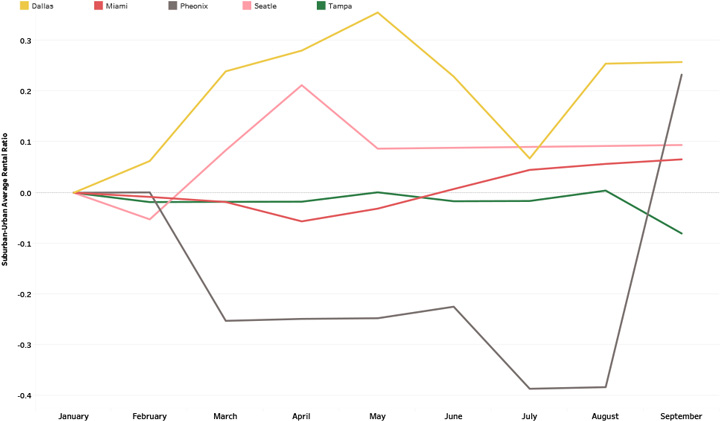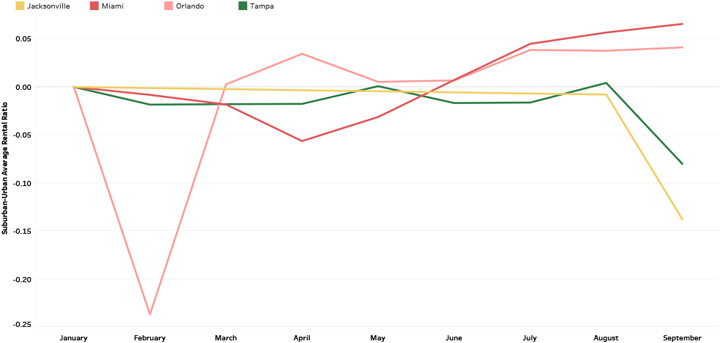2021 E-Insights Report
COVID-19 Impact on Urban-Suburban Rental Demand
This measures the percentage change in the ratio rents in suburban ZIP codes in the MSA by the urban ZIP codes. Effectively, the ratio is a measure of how consistently or inconsistently the suburban or urban rents rises over time. An increase over zero indicates that, the suburban rents in that MSA are higher than urban rents and a decrease indicates vice-versa. Researchers measured this to test the hypothesis that suburban rents are increasing and to determine if people began fleeing from cities (and flocking to suburbs) due to COVID-19.
This data was gathered from Zillow Research, which collects average monthly rents by ZIP code. Researchers filtered out the ZIP codes which fall in a particular MSA based on Zillow’s methodology of classifying a zip code urban, suburban or rural. They averaged the rents in suburban and urban ZIP codes and divided them to get the ratio for each MSA month-by-month.
The main limitation of this data is that rent per square foot would be the most accurate way to compare the rent between urban and suburban zip codes. Researchers did not, however, have that granularity of information.
Insights
- Suburban rates began to increase in February for some cities, but this was not seen across the board.
- Phoenix saw a steep decline in suburban rents with respect to urban, but had a sharp spike in October.
- Tampa and Jacksonville are showing a decreasing trend with urban rent increase faster than suburban rents.
- It is difficult to infer the effects of COVID-19 on relative rental demand. Some trends were present even before February.
Suburban-Urban Average Rental Ratio Percentage Change

Suburban-Urban Average Rental Ratio Percentage Change-Florida
